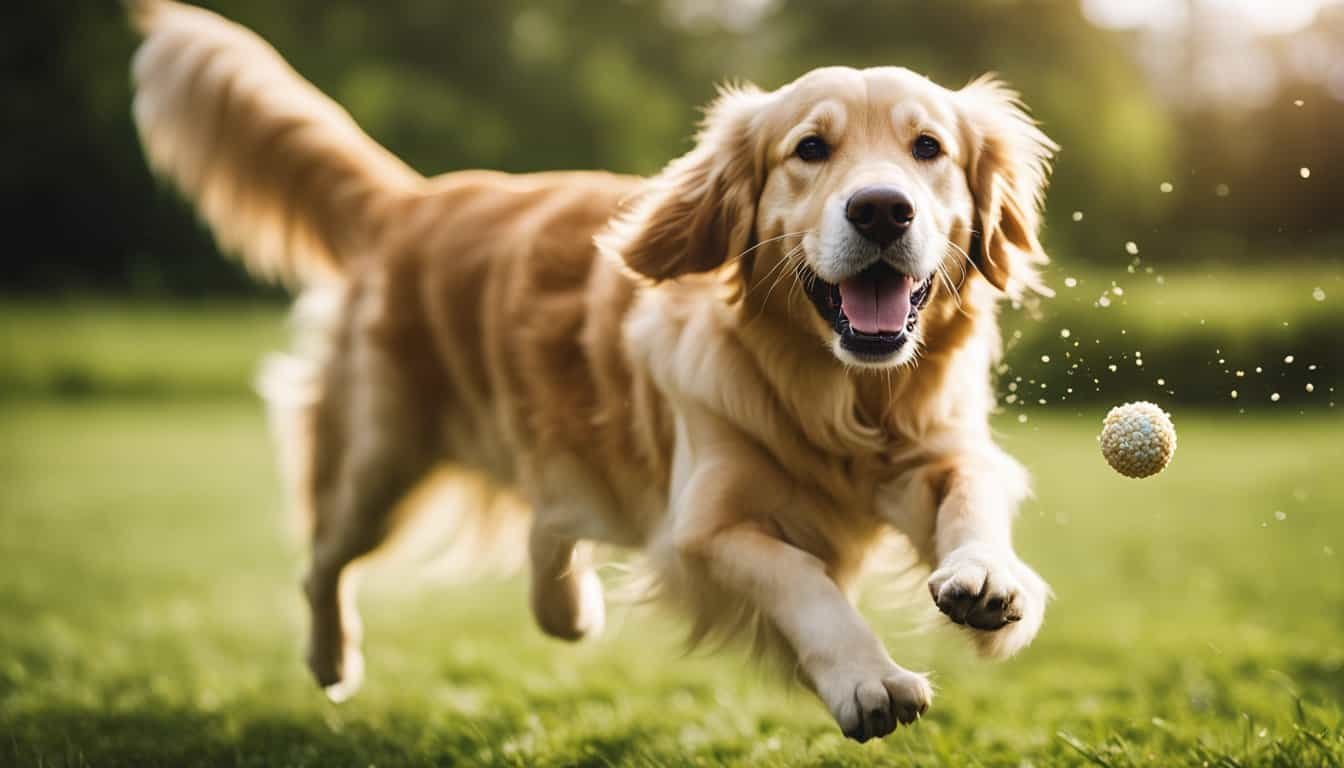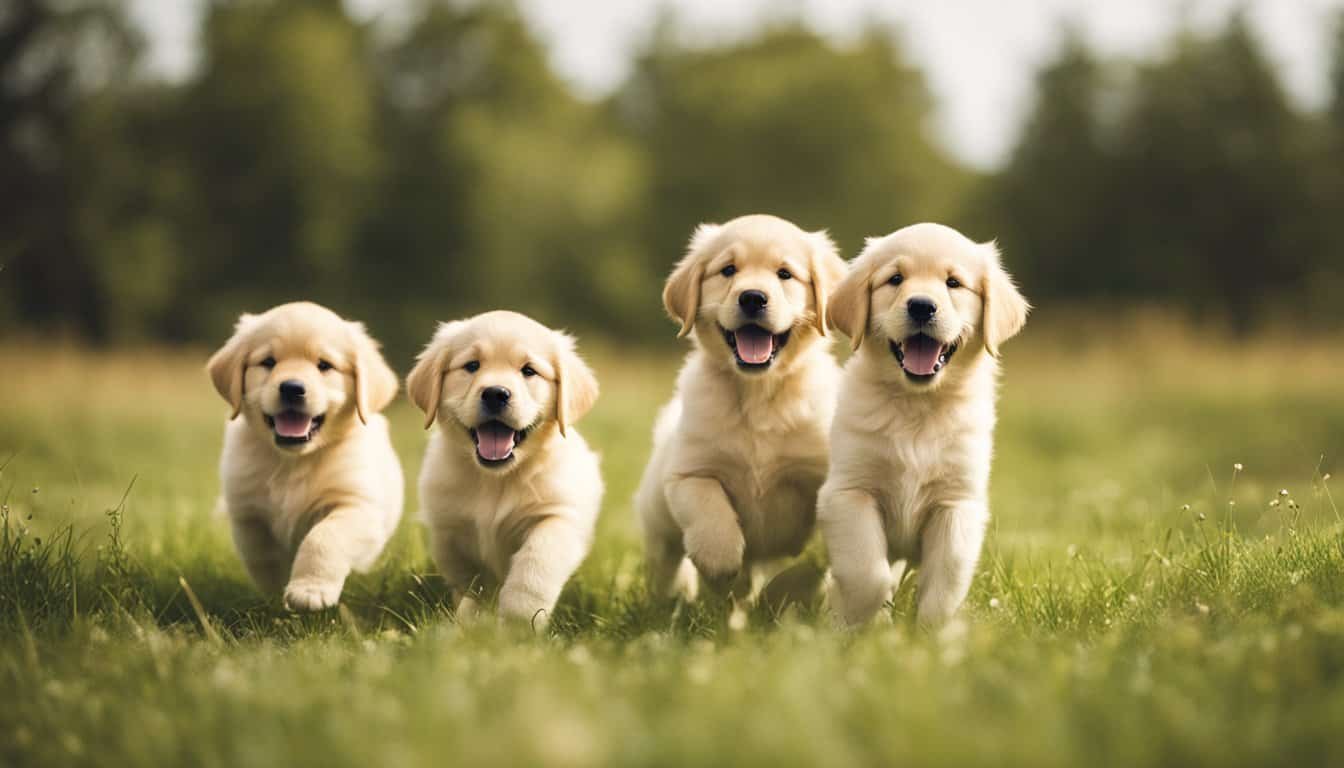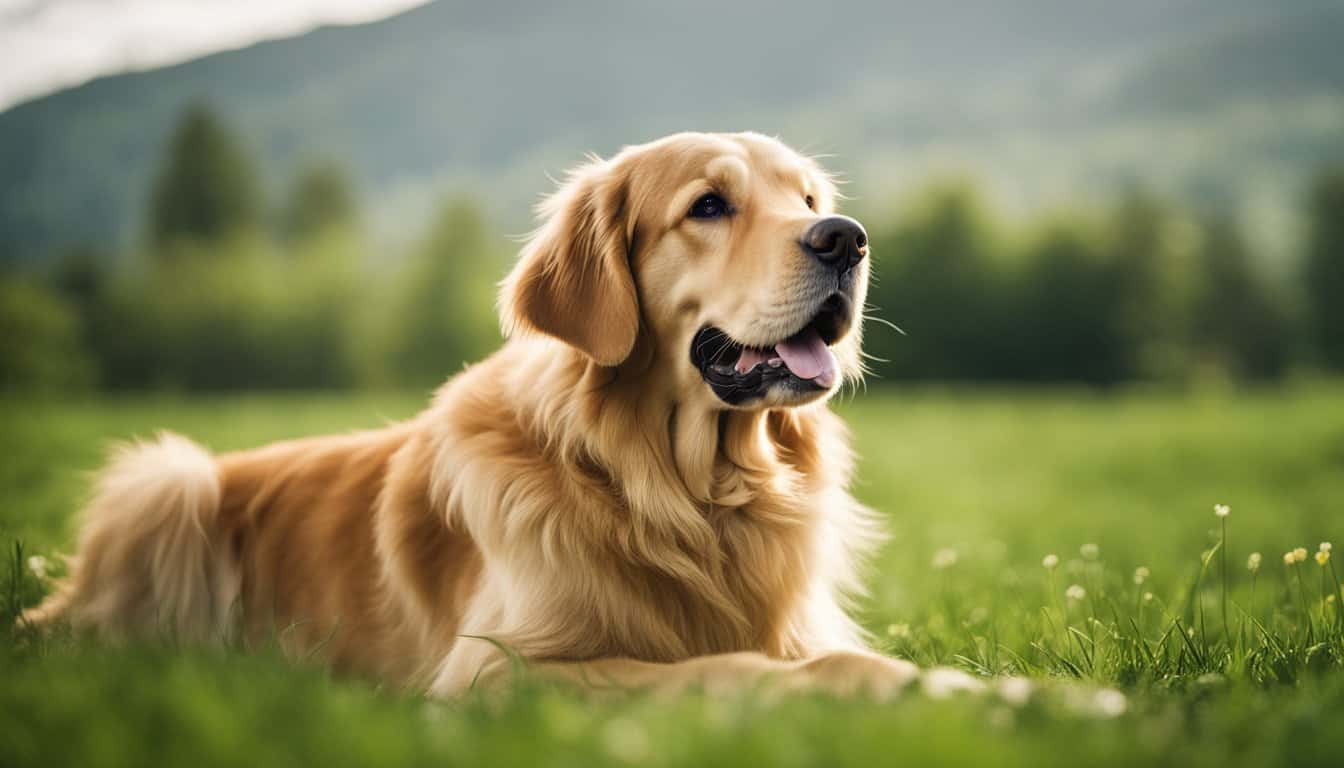Are you curious about the differences between a Golden Retriever and a Dalmatian? These two popular dog breeds may have some similarities, but they also have distinct characteristics that set them apart. In this article, we’ll explore the unique traits of both breeds, from their appearance to their temperament and exercise needs. Whether you’re considering adding a new furry friend to your family or simply interested in learning more about these lovable dogs, this guide will help you understand the differences between a Golden Retriever and a Dalmatian.
When it comes to physical appearance, Golden Retrievers and Dalmatians couldn’t be more different. Golden Retrievers are known for their beautiful, dense golden coats that are water-resistant and require regular grooming. On the other hand, Dalmatians have short, sleek coats with distinctive spots that can be either black or liver-colored. Their unique coat pattern makes them instantly recognizable and sets them apart from other breeds. So, if you’re looking for a dog with a striking appearance, the Dalmatian might be the one for you.
Temperament is another area where Golden Retrievers and Dalmatians differ. Golden Retrievers are often described as friendly, intelligent, and eager to please. They are known for their gentle and patient nature, making them excellent family companions and therapy dogs. On the contrary, Dalmatians are known for their independent and energetic personalities. They are active and require plenty of exercise and mental stimulation to keep them happy. So, if you’re looking for a laid-back and easygoing companion, a Golden Retriever might be the better choice. However, if you lead an active lifestyle and enjoy outdoor activities, a Dalmatian might be a better fit for you.
History and Origins of Golden Retrievers
The history and origins of Golden Retrievers trace back to the 19th century in Scotland. They were originally bred by Sir Dudley Marjoribanks, also known as Lord Tweedmouth, who wanted to develop a dog breed that was skilled in retrieving shot waterfowl.
During this time, Lord Tweedmouth crossed a yellow-colored retriever with the now-extinct Tweed Water Spaniel, known for its excellent retrieving abilities. This crossbreeding resulted in the foundation of the Golden Retriever breed. Over the years, some breeds such as Bloodhounds, Irish Setters, and more were added to refine the breed’s hunting and tracking abilities.
Golden Retrievers were first recognized as a breed by The Kennel Club (UK) in 1913 and were brought to the United States in the 1920s. Since then, they have gained immense popularity due to their friendly nature, intelligence, and versatility in various roles such as working dogs, service dogs, therapy dogs, and family companions.
Golden Retrievers also have a strong presence in competitive dog sports such as obedience, agility, and field trials. Their exceptional trainability and willingness to please make them highly sought after in these activities.
Today, Golden Retrievers are considered one of the most popular dog breeds in the United States and around the world. Their friendly and patient temperament, coupled with their stunning golden coats, make them a beloved choice for families and individuals alike.
Golden Retrievers and Goldendoodles are related breeds. Goldendoodles are a cross between a Golden Retriever and a Poodle, resulting in a breed that inherits the intelligence and loyalty of both parent breeds. This crossbreed was first developed in the 1990s and has gained popularity for their hypoallergenic coat and friendly personality.
Understanding the history and origins of Golden Retrievers can give you a deeper appreciation for their unique characteristics and traits. Whether you have a purebred Golden Retriever or a charming Goldendoodle, these breeds are sure to bring love, joy, and companionship into your life.
Continue reading to learn more about the physical appearance and temperament of Golden Retrievers.
History and Origins of Dalmatians
Dalmatians have a fascinating history and origin story that goes back centuries. Originally from the region of Dalmatia, which is now part of modern-day Croatia, these unique dogs have captured the hearts of many dog lovers around the world.
1. Ancient Ancestors
Believe it or not, Dalmatians have ancient ancestors. Evidence suggests that their roots can be traced back to ancient Egyptian times, as depictions of spotted dogs resembling Dalmatians have been found in Egyptian tombs. These early Dalmatian ancestors were believed to have been bred as hunting dogs and guard dogs.

« Secrets Revealed: How to Get a Free Golden Retriever Puppy in VA – You Won’t Believe 5
The Astonishing Rise of Golden Retrievers in Asia: Discover the Surprising World where These Beloved Dogs Steal Hearts »
2. Carriage Dogs
During the 18th and 19th centuries, Dalmatians began to gain popularity as carriage dogs. They were known for their ability to run alongside horse-drawn carriages, serving as protectors and guardians. Their distinctive spots and energetic nature made them easily recognizable and highly sought after as loyal companions.
3. Firehouse Mascots
Dalmatians gained even more recognition in the 19th century when they became associated with firehouses. It was believed that Dalmatians had a natural affinity for horses and were effective at guiding and comforting them. Firefighters began using Dalmatians as mascots and companions, further solidifying their iconic status.
4. Disney’s “101 Dalmatians”
In the world of popular culture, Dalmatians became even more beloved thanks to Disney’s animated film, “101 Dalmatians.” The movie showcased the beauty and playful nature of these dogs, leading to a surge in their popularity as family pets.
5. Versatile Working Dogs Today
While Dalmatians are no longer commonly used as carriage dogs or firehouse mascots, they still excel in various roles. They are highly trainable and have been successfully trained as therapy dogs, search and rescue dogs, and even competitors in dog sports like agility and obedience trials.
The history and origins of Dalmatians demonstrate how they have evolved from their ancient roots to become beloved family pets and versatile working dogs. Their distinctive appearance, energetic nature, and loyalty continue to make them a favorite breed among dog enthusiasts worldwide.
Physical Appearance and Characteristics of Golden Retrievers
If you’re a dog lover, you can’t help but be captivated by the stunning physical appearance of Golden Retrievers. These beautiful dogs have a distinct look that sets them apart from other breeds.

Coat: One of the most notable features of Golden Retrievers is their dense and lustrous golden coats. Their fur is thick and water-resistant, making them excellent swimmers. Regular grooming, including brushing and occasional bathing, will help keep their coat healthy and free from mats.
Build: Golden Retrievers have a robust and muscular build. They are medium to large-sized dogs with a strong and athletic physique. Their well-proportioned bodies give them an appearance of strength and agility.
Face: Golden Retrievers have friendly and expressive faces. Their almond-shaped eyes, which can range in color from dark brown to golden, shine with intelligence and warmth. Coupled with their broad and smiling muzzle, their eyes convey a sense of kindness and a zest for life.
Temperament: Beyond their physical appearance, Golden Retrievers are beloved for their affectionate and gentle nature. These dogs are known for their outgoing personalities and unwavering loyalty. Whether you have a Golden Retriever or a delightful Goldendoodle – a crossbreed between a Golden Retriever and a Poodle – you can expect a loyal and friendly companion who enjoys being part of your family.
Intelligence: Golden Retrievers are not just good-looking; they’re also highly intelligent. Their sharp minds make them quick learners, which is why they excel in various roles, including search and rescue, therapy work, and as service dogs. This intelligence combined with their friendly disposition makes training and socialization a breeze.

Golden Retrievers are truly a breed that captures both hearts and eyes. Their physical beauty is matched by their loving personalities and intelligence. They make wonderful family pets and are always ready to shower you with love and loyalty.
Continue reading to learn more about the exercise needs of these amazing dogs and how they compare to Dalmatians.
Physical Appearance and Characteristics of Dalmatians
Dalmatians are a distinct breed with unique physical characteristics. Here’s what you can expect when it comes to their appearance and characteristics:
Coat:
Dalmatians are famously known for their short, sleek coats that are covered in spots. Their spots can vary in color from black to liver (a reddish-brown color), and they can have varying patterns as well. Their coats do not require extensive grooming, making them relatively low-maintenance in terms of coat care.
Build:
Dalmatians have a lean and muscular build, giving them an athletic appearance. They are medium-sized dogs with a strong and well-proportioned body. Their bodies are balanced and their movements are graceful, making them naturally agile.

Ears and Tail:
One of the most notable physical traits of Dalmatians is their ears. They have medium-sized, rounded ears that sit close to their heads. Their tails are long and taper to a slight curve at the end.
Characteristics:
Dalmatians are known for their high energy levels and love for exercise. They require regular physical activity to stay happy and healthy. Their friendly and outgoing nature makes them great companions for active individuals and families. While they are generally good with children, they may need early socialization to ensure positive interactions.
Temperament:
Dalmatians are intelligent and independent dogs. They can be strong-willed and may require consistent and patient training. They are known to be loyal and protective of their families. Socialization from a young age will help them flourish and prevent any potential behavioral issues.
Special Considerations:
As with any breed, it’s important to consider specific needs and potential health concerns when choosing a Dalmatian. For instance, Dalmatians are prone to certain genetic issues, such as deafness and urinary tract problems. Regular check-ups with a veterinarian and a balanced diet are paramount to their well-being.
Understanding the physical appearance and characteristics of Dalmatians is essential when considering them as your canine companion. Whether you’re looking for an energetic and devoted pet or a show-stopping addition to your family, a Dalmatian’s unique qualities make them an intriguing breed to consider.

Temperament and Personality of Golden Retrievers
Golden Retrievers are renowned for their friendly and outgoing temperament. They are known to be one of the most affectionate and gentle breeds, making them popular companions for families and individuals alike. Here are some key aspects of their temperament and personality:
- Intelligence: Golden Retrievers are highly intelligent dogs. They are quick learners and excel in various activities, including obedience training and agility. Their intelligence also makes them well-suited for service and therapy work.
- Friendliness: Golden Retrievers have a natural love for people. They are typically social butterflies and enjoy interacting with both familiar faces and strangers. Their friendly nature makes them excellent family pets as they easily bond with children and other pets.
- Eager-to-Please Attitude: Golden Retrievers have a strong desire to please their owners, which contributes to their trainability. They are responsive to positive reinforcement and enjoy being given tasks to complete. This eagerness to please also makes them adaptable to different environments.
- Playfulness: Golden Retrievers have an inherent sense of playfulness that persists even into adulthood. They love engaging in games and activities, such as fetch and swimming. Their playful nature can provide hours of entertainment for both you and your family.
- Gentle Demeanor: Golden Retrievers are known for their gentle and tolerant nature. They are patient and forgiving, which makes them well-suited for households with children or other pets. However, it’s still important to teach children how to properly interact with dogs to ensure a safe and positive relationship.
- Loyal and Devoted: Golden Retrievers form strong bonds with their owners and are incredibly loyal and devoted. They thrive on human companionship and can become attached to their family members. Their loyalty makes them excellent watchdogs, as they will alert you to any unusual activity or strangers in the vicinity.
Remember, every dog is an individual, and while these traits generally apply to Golden Retrievers, there can be variations in temperament. Proper socialization, training, and a loving environment are key to shaping their personality and ensuring they become well-rounded companions.
Temperament and Personality of Dalmatians
When it comes to temperament and personality, Dalmatians have their own unique charm. They are known for being energetic, spirited, and independent. Dalmatians are intelligent dogs that are always on the move, requiring regular exercise and mental stimulation. While they are not known to be aggressive, they can be quite protective and vigilant, making them excellent watchdogs.
Here are some key personality traits of Dalmatians:
- High-energy: Dalmatians are bursting with energy and require ample opportunities to burn it off. They enjoy activities like running, playing fetch, and participating in agility training. Regular exercise not only keeps them physically fit but also helps maintain their mental well-being.
- Friendly and outgoing: Dalmatians are generally friendly with both humans and other animals. They thrive on social interaction and enjoy being part of the family. Their friendly nature makes them great companions for children and other pets.
- Intelligent and independent: Dalmatians are highly intelligent dogs and can be quite independent thinkers. This means that while they are trainable, they may also challenge you from time to time. Consistent and positive reinforcement training methods work best with Dalmatians.
- Loyal and protective: Dalmatians have a deep sense of loyalty towards their families. They can exhibit protective behaviors when they sense a threat or when their loved ones are in danger. Their natural instincts make them excellent guard dogs.
Keep in mind that every Dalmatian is unique, and their personalities can vary based on their genetics, upbringing, and individual experiences.

If you’re considering adding a Dalmatian to your family, it’s important to understand their specific needs and be prepared to provide them with ample exercise, mental stimulation, and socialization. A happy and well-rounded Dalmatian makes for a wonderful companion in the right environment.
Exercise and Training Requirements of Golden Retrievers
Exercise Requirements: Golden Retrievers are a breed that thrives on physical activity. They have high energy levels and need regular exercise to stay happy and healthy. Providing your Golden Retriever with ample exercise opportunities will help prevent behavioral issues that may arise from pent-up energy. Aim for at least 60 minutes of exercise each day. This can include activities such as brisk walks, jogs, swimming, or playing fetch. Golden Retrievers also enjoy participating in agility or obedience training, which can provide mental stimulation along with physical exercise.
Training Requirements: Golden Retrievers are highly intelligent and eager to please, making them relatively easy to train. However, they can also be easily distracted due to their friendly and sociable nature. Consistency, positive reinforcement, and patience are key when training your Golden Retriever. Begin with basic obedience commands such as sit, stay, and come, and gradually progress to more advanced training. Incorporate reward-based methods using treats, praise, and play as motivators. Remember to keep training sessions short and fun to maintain your dog’s interest and focus.
Socialization: Golden Retrievers are known for their friendly and sociable nature, but proper socialization is essential to ensure they become well-rounded and confident dogs. Expose your Golden Retriever to various environments, people, and other animals from a young age. This can include visits to parks, attending puppy classes, and organizing playdates with other dogs. Socialization helps prevent fear or aggression towards unfamiliar situations or individuals.
Considerations: Since Golden Retrievers are prone to obesity, it’s important to provide them with a balanced and nutritious diet. Monitoring their food intake, offering healthy treats, and avoiding overfeeding is crucial to maintaining their ideal weight. Regular veterinary check-ups and vaccinations are also essential to keep them in good health. Additionally, be aware that Golden Retrievers can experience separation anxiety if left alone for long periods. Providing mental stimulation and creating a comforting environment can help alleviate this condition.

Remember, every Golden Retriever is an individual, and their exercise and training requirements may vary slightly. It’s essential to adapt your routine to meet their specific needs, preferences, and energy levels. By investing time and effort into their exercise and training, you’ll develop a strong bond with your Golden Retriever and ensure they live a happy and fulfilling life.
Exercise and Training Requirements of Dalmatians
Let’s talk about the exercise and training requirements of Dalmatians. These elegant dogs are known for their unique spots and energetic personalities, so it’s important to provide them with plenty of physical and mental stimulation. Here’s what you need to know about keeping Dalmatians happy and healthy:
1. High Energy Levels: Dalmatians are a breed that thrive on activity and exercise. They are known for their stamina and endurance, which means they require a significant amount of daily exercise to stay physically and mentally fit.
2. Daily Exercise: To keep your Dalmatian in top shape, plan for at least 60 to 90 minutes of vigorous exercise every day. This can include activities like brisk walks, jogging, hiking, or playing fetch. The key is to provide them with opportunities to burn off their excess energy.
3. Mental Stimulation: In addition to physical exercise, Dalmatians also need mental stimulation to prevent boredom and destructive behaviors. Engage their intelligent minds with challenging puzzle toys, obedience training sessions, or interactive games that encourage problem-solving.

4. Consistent Training: Dalmatians are highly intelligent dogs but can also be stubborn at times. Therefore, consistent and positive training methods work best. Use reward-based techniques such as treats and verbal praise to reinforce good behavior and discourage unwanted habits.
5. Socialization: Dalmatians are naturally friendly and sociable dogs, but early and ongoing socialization is essential to ensure they grow up to be well-rounded and confident. Expose them to different environments, people, and other animals in a positive and controlled manner from an early age.
6. Avoid Overexertion: Despite their energy levels, it’s important to strike a balance between exercise and rest for Dalmatians. Be mindful not to overexert them, especially during hot weather, as they can be prone to overheating due to their short, thin coat and lack of insulation.
Remember, each Dalmatian may have slightly different exercise requirements based on their age, health, and individual temperament. It’s always a good idea to consult with your veterinarian or a professional dog trainer to tailor a personalized exercise and training plan that meets your Dalmatian’s specific needs.
*So, get ready to embark on an active journey with your Dalmatian, filled with lots of exercise, mental challenges, and

Health and Lifespan of Golden Retrievers
Golden Retrievers are known for their friendly personality and beautiful golden coats. As a dog lover and owner of a Golden Retriever and a Goldendoodle, you want to ensure that your furry friend lives a healthy and happy life. Understanding the health and lifespan of Golden Retrievers is crucial in providing them with the best care possible.
General Health
Golden Retrievers are generally considered a healthy breed, but they are prone to certain health conditions. Some common health issues include:
- Hip Dysplasia: Like many large breeds, Golden Retrievers can develop hip dysplasia, a condition where the hip joint doesn’t fit properly. Regular exercise and maintaining a healthy weight can help minimize the risk.
- Elbow Dysplasia: This is a condition where the elbow joint doesn’t develop properly. Monitoring their movement and avoiding excessive jumping or rough play can help reduce the risk.
- Cancer: Unfortunately, Golden Retrievers have a higher risk of developing cancer compared to other breeds. Regular veterinary check-ups and early detection are crucial for successful treatment.
Lifespan
On average, the lifespan of a Golden Retriever is around 10 to 12 years. However, with proper care and a healthy lifestyle, some can live up to 15 years or even longer. Factors that can influence their lifespan include genetics, diet, exercise, and overall healthcare.
Maintaining Good Health
To help ensure your Golden Retriever lives a long and healthy life, consider these tips:
- Regular Exercise: Golden Retrievers are active dogs that require daily exercise to burn off their energy. Aim for at least 60 to 90 minutes of vigorous exercise each day to keep them physically and mentally stimulated.
- Balanced Diet: Provide your Golden Retriever with a balanced diet tailored to their age, size, and activity level. Consult with your veterinarian to determine the best food choices for your furry friend.
- Routine Veterinary Care: Regular check-ups, vaccinations, and preventive care are essential to maintaining their health. Your veterinarian can help identify any potential health concerns and offer appropriate treatments.
By understanding the health challenges and lifespan of Golden Retrievers, you can provide your furry friend with the best care possible. Remember, each dog is unique, and consulting with professionals, such as your veterinarian, will ensure your Golden Retriever gets the personalized care they need throughout their life.

Health and Lifespan of Dalmatians
When it comes to the health and lifespan of Dalmatians, there are a few important factors to keep in mind. Dalmatians are generally a healthy breed, but like any other dog, they can be prone to specific health conditions. Understanding these conditions and providing proper care can help ensure a long and happy life for your furry friend.
Common Health Conditions:
- Deafness: Dalmatians are known to have a higher risk of congenital deafness. It’s estimated that about 30% of Dalmatians are either partially or completely deaf in one or both ears. Regular hearing tests can help detect any hearing loss early on.
- Urinary Stones: Dalmatians have a unique urinary system that makes them more prone to developing urinary stones. Feeding a diet low in purines and ensuring they have access to fresh water at all times can help prevent this condition.
- Allergies: Dalmatians can be prone to allergies, including food allergies and environmental allergies. Pay attention to any signs of itching, redness, or gastrointestinal issues, and consult with your veterinarian if you suspect an allergy.
Lifespan:
On average, Dalmatians have a lifespan of 10 to 13 years. However, with proper care, they can live even longer. Regular veterinary check-ups, a balanced diet, exercise, and mental stimulation are key to keeping your Dalmatian healthy and happy throughout their life.
Remember, each Dalmatian is unique, and your veterinarian can offer personalized advice based on your dog’s specific needs and health history. Regular physical exams and open communication with your veterinarian are essential for maintaining your Dalmatian’s well-being.

So, whether you already have a Dalmatian or are considering bringing one into your family, understanding their health requirements will help you provide the best possible care. From watching their diet to addressing any potential health issues early on, you can ensure that your Dalmatian thrives and enjoys a long and happy life by your side.
Conclusion
Understanding the exercise and training requirements of Dalmatians is crucial for providing them with a happy and healthy life. These high-energy dogs need at least 60 to 90 minutes of vigorous exercise each day, along with mental stimulation to prevent boredom and destructive behaviors. Consistent and positive training methods, as well as early and ongoing socialization, are essential for Dalmatians.
To ensure the well-being of your Dalmatian, it’s important to avoid overexertion and consult with professionals to create a personalized exercise and training plan. Regular veterinary check-ups, a balanced diet, exercise, and mental stimulation are key to keeping Dalmatians healthy and happy throughout their life.
By understanding their exercise and training needs, as well as potential health conditions such as deafness, urinary stones, and allergies, you can provide the best care for your Dalmatian. With the right approach, you can enjoy a loving and fulfilling relationship with your Dalmatian companion for many years to come.









